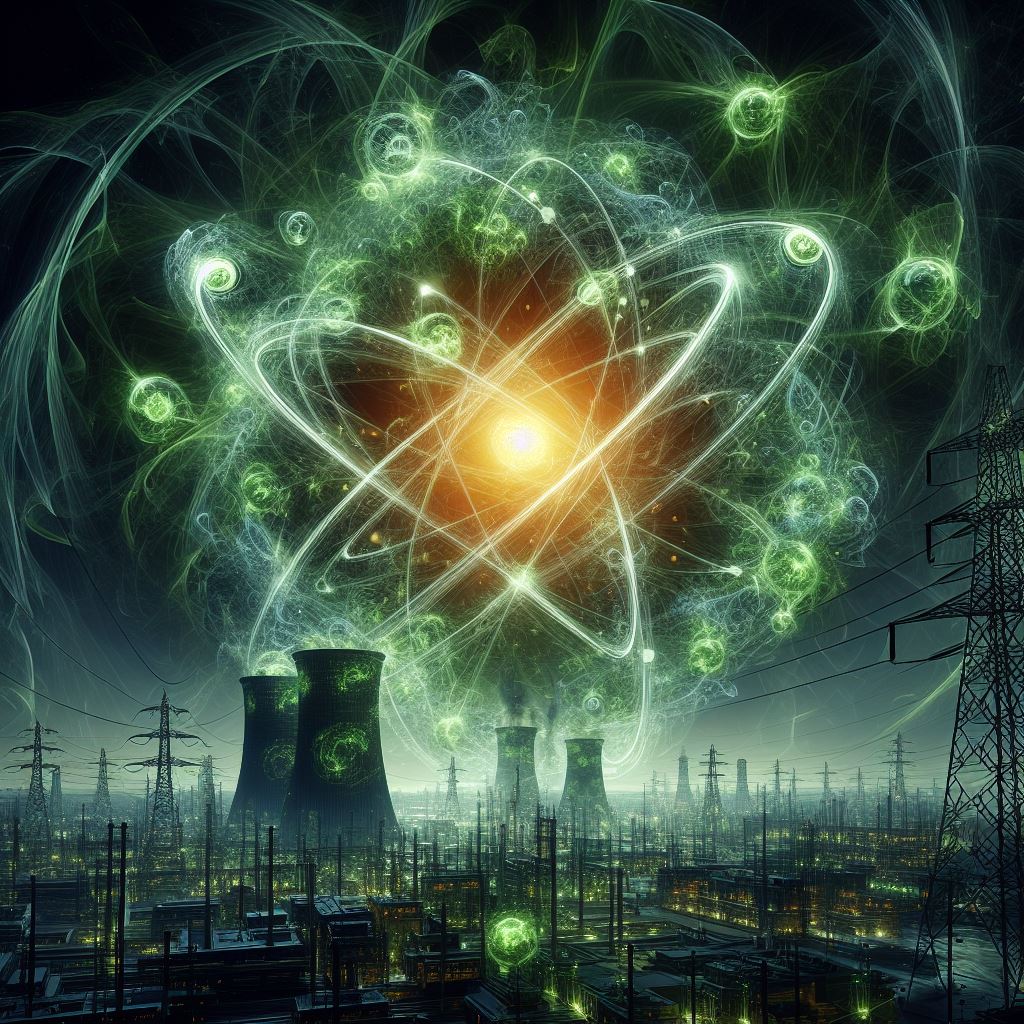
Thorium presents an appealing alternative to uranium for several reasons, chief among them being its abundance and the reduced long-lived radioactive waste it produces. Unlike uranium, which needs to be enriched to be used effectively as fuel, thorium can be utilized more efficiently and with less environmental impact. This characteristic alone sets the stage for a revolution in how we approach nuclear fuel cycles, leaning towards a more sustainable and less hazardous practice, known as the thorium fuel cycle.
Thorium Fuel Cycle
The thorium fuel cycle presents a distinct approach to nuclear fission. While thorium itself cannot sustain a nuclear reaction independently, when exposed to neutrons, it transforms into uranium-233, a synthetic isotope that can sustain such a reaction. This transformation makes thorium a potential fuel source and substantially reduces the production of long-lasting radioactive waste. This is a significant advantage in addressing the challenging issue of nuclear waste management.
One of the main benefits of the thorium fuel cycle is its ability to utilize a more abundant and less expensive material compared to traditional uranium-based fuels. Thorium is approximately three to four times more abundant than uranium and can be found in many countries, reducing dependency on specific regions for fuel supply. This could lead to greater energy security and stability in global energy markets.
The reduced production of long-lived radioactive waste minimizes environmental impact and long-term storage challenges. The waste generated from thorium reactors remains radioactive for a much shorter period compared to waste from conventional uranium reactors. This means that future generations will have to manage and store radioactive waste for a significantly shorter time, easing the burden on both environmental and economic resources.
Thorium reactors can be designed to operate at lower pressures and temperatures compared to traditional reactors, enhancing safety and reducing the risk of accidents. The inherent safety features of thorium-based nuclear reactors make them an attractive option for countries looking to expand their nuclear energy programs while prioritizing safety and environmental sustainability.
Advanced Nuclear Reactors
The potential of thorium as a fuel source has sparked a renewed interest in advanced nuclear reactors specifically designed to harness its capabilities. These next-generation reactors prioritize safety and efficiency, aiming to address and reduce the risks traditionally associated with nuclear power plants. These advanced reactors are engineered to be versatile, and capable of generating power as well as contributing to other applications such as medical isotope production, desalination, and district heating.
One innovative design gaining attention in this field is the molten salt reactor (MSR). MSRs represent a departure from conventional reactor designs by utilizing a liquid fuel mixture. This unique approach facilitates simpler and inherently safer operations compared to traditional solid-fueled reactors. The use of liquid fuel also significantly diminishes the risk of meltdowns and allows for rapid shutdowns in emergency situations, enhancing overall safety measures.
MSRs are well-suited for efficiently utilizing thorium as a fuel. The ability to burn thorium effectively positions MSRs as a crucial component in the advancement of thorium-based nuclear energy. This makes them a key player in the transition towards cleaner and more sustainable nuclear power options.
Nuclear Energy Innovation
The integration of thorium into nuclear innovation extends far beyond just advanced reactor designs. Researchers and engineers are continually pushing the boundaries to enhance the viability and efficiency of thorium-based nuclear power. They are exploring innovative technologies and methods, from advancements in waste recycling to improvements in reactor efficiency and safety measures.
One significant advantage of thorium nuclear energy lies in its scalability. Unlike large, centralized uranium-based nuclear plants, thorium reactors can be developed in smaller, modular configurations. This modular design offers several benefits. Firstly, it allows for greater adaptability to various environments and requirements. Secondly, it reduces both construction and operational costs, making nuclear power more economically feasible and accessible to a wider range of communities and countries.
The modularity of thorium reactors also provides flexibility in deployment. These smaller-scale reactors can be more easily integrated into existing energy infrastructures or deployed in remote areas where large-scale power plants are impractical. This flexibility enables a more distributed and resilient energy system, capable of meeting diverse energy needs while reducing dependency on fossil fuels.
The ongoing research and development in thorium-based nuclear energy are paving the way for safer and more sustainable nuclear power options. Enhanced safety features and reduced environmental impact make thorium reactors an attractive choice for countries seeking to transition to cleaner energy sources without compromising on safety or efficiency.
The Problems
Despite its numerous advantages, the widespread adoption of thorium-based nuclear power faces several challenges. One major obstacle is the substantial investment required in research, development, and infrastructure to transition from uranium-based technologies to thorium. The existing nuclear industry is heavily invested in uranium technology, encompassing everything from mining and processing to reactor design and fuel fabrication. As a result, shifting towards thorium necessitates a coordinated effort across various sectors and disciplines to facilitate this transition effectively.
Nuclear energy, irrespective of the fuel source, is governed by strict safety and environmental regulations. For thorium to become a significant part of the energy landscape, regulatory frameworks must evolve to acknowledge its benefits and address its unique characteristics and challenges. This includes updating safety standards, waste management protocols, and licensing procedures to accommodate the specific requirements and potential of thorium-based nuclear reactors.
While thorium-based nuclear power offers promising solutions to many of the challenges associated with traditional uranium-based nuclear energy, its widespread adoption requires overcoming significant hurdles. These include substantial investments, industry-wide collaboration, and regulatory adaptations to ensure safety and environmental protection. Addressing these challenges is essential to unlocking the full potential of thorium-based nuclear energy and realizing its benefits in the global transition towards cleaner and more sustainable energy sources.

